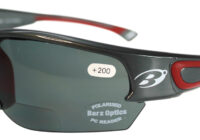In recognition of World Autism Day and Autism Awareness month this April, Australian Sailing has teamed up with AMAZE – the peak body for Autism in Victoria – to produce resources for instructors and clubs to help ensure children with Autism have a quality experience when trying sailing for the first time.
In recent years, major progress has been made in increasing awareness and acceptance of autism, not least thanks to the many amazing autistic advocates who have worked tirelessly to bring the lived experience of autistic people to the wider world. There is still more that needs to be done, however, to raise awareness and acceptance of Autism and the many strengths and skills autistic people have, as well as the challenges they still face today.
Autism is a neurodevelopmental condition that affects the way people communicate, socialise, interpret, and engage with their environment. No two Autistic people are the same, as each Autistic person you meet has their own unique strengths and challenges.
Australian Sailing have worked with AMAZE the peak body for Autism to develop resources for instructors and parents, to help children particularly those attending Tackers as it is a social experience, and for many Autistic children this can be challenging. Some Autistic children will also feel anxious about the social and sensory elements of Tackers.

The resources include strategies and tips for instructors on how to communicate and what to do if an autistic child gets overwhelmed during a Tackers session.
AMAZE lived experience consultants with Autism recently visited a Tackers lesson at Albert Park Lake and at Royal Melbourne Yacht Squadron to understand what elements of a Tackers lesson could be overwhelming to a child who has Autism and not sailed before.
As a result of their observations, AMAZE have developed two social scripts for Tackers. One describes a Tackers lesson launching from a beach for OTB clubs and the other describes what happens during a Tackers session at an inland lake. Both social scripts can be acessed here.
A social script is a document that uses storytelling techniques to explain new experiences and environments to Autistic people through simple language and images.
A social script will usually include very specific and illustrated information about what an autistic person can expect when visiting a place or event – such as how they’ll travel to a place, what it will look like, who will engage with them, what activities will occur, and what they can do if they feel overwhelmed.
The social scripts that have been developed explain the different stages of a Tackers lesson.
Clubs can make these scripts available to the parents and teachers of Autistic children before they attend a Tackers session for the first time. This will help them prepare and know what to expect when they first arrive at a club.
These social scripts will be made available as part of the information when parents register their child(ren) through revolutioniseSport for Tackers for the first time. The information is useful for any parent as it explains step by step what a child will encounter when trying sailing and Tackers for the first time.

Resources for Instructors
AMAZE have also produced some resources to help instructors and coaches when instructing children with Autism. These resources can be found here.
Autistic people often require support with communication and prefer direct communication. Some Autistic people can find non-verbal communication such as body language and gestures difficult to interpret.
Below are listed some of the tips around communication that are included in the resources for instructors.
Communication tips for instructors:
- Simplify your language. This means keeping your communication succinct and efficient.
- Allow for thinking time. Autistic children often need more time to process verbal information. They may need more thinking time in busy environments.
- Communicate one idea at a time and in order. Some Autistic people may become overwhelmed with a long list of verbal instructions. Each idea may have two to three steps.
- Use an even tone of voice. When in conversation, people need to focus on the content and the way it is being said. This can be too much information, and at times an uneven tone can be misconstrued. For example, raising your voice to instruct could be interpreted as anger. By keeping an even tone when speaking, Autistic people can focus on what you are saying, not how you are saying it.
- Use clear language. Avoid or explain the use of sarcasm, similes, or metaphors. These types of communication mean that Autistic children must interpret the hidden meaning behind what is being said, which takes more time and can cause a breakdown in communication.
- Speak down wind.
- Support verbal instructions with diagrams or a demonstration.
- Model instructions and ask the group to copy.
- Clearly communicate the start and finish of an activity. Pausing briefly between the instructions and the start of the activity makes this clearer. You could use a verbal prompt like ‘go’ and ‘stop.

Sensory Conditions
Sensory processing refers to the way the body interprets and manages information from the environment. Sensory information gives real time information about keeping our bodies safe and regulated. Many Autistic people are sensitive in one or more senses, or they require large amounts of input. People can need both.
Being mindful of Autistic children’s sensory needs can make their experience at Tackers a positive one. The resources provide some solutions to some of the sensory conditions for instructors and clubs when running Tackers.
Some sensory considerations include:
Sensory considerations
- The club rooms and shed can be crowded and busy. This may be challenging for some Autistic children.
- Some yacht clubs have shared public spaces where people walk, cycle, skate and walk their dogs.
- Be aware of potential noise sensitivities when trying to gain students attention – loud whistles, for example, may be painful to Autistic children who are sensitive to noise.
- The Tackers eat together on their lunch break. Too many food odours can be overwhelming.
- Some Autistic children may struggle getting wet and sandy.
- Some Autistic children may find wearing sunscreen and a hat challenging.
- Bright glare from lighting in the club area and off the water.
- The texture of a life jacket may be uncomfortable for Autistic children.
Solutions
- Ensure Autistic children know where the quiet spaces are.
- Let Autistic children know where ‘the inbounds’ and ‘out of bounds’ areas are.
- Use gestures or another non-verbal way to get the groups attention.
- Some Autistic children may need to eat in a separate area from the group.
- Autistic children may need to practice wearing wet clothing and shoes beforehand.
- Wear their own hat. This can be any brimmed hat that the child is comfortable in. It may be windy on the water, so a hat with a string may be helpful.
- Sunglasses may minimise glare from lighting in the club area and off the water.
- Practice wearing a life jacket. If the yacht club can loan one to parents, that would be great. Autistic children may need to wear a life jacket a few times to adjust to the texture and move around in their life jacket.
These tips and strategies for instructors along with the social scripts for parents are published on the Australian Sailing participation hub here and on the Instructor resources page here.







